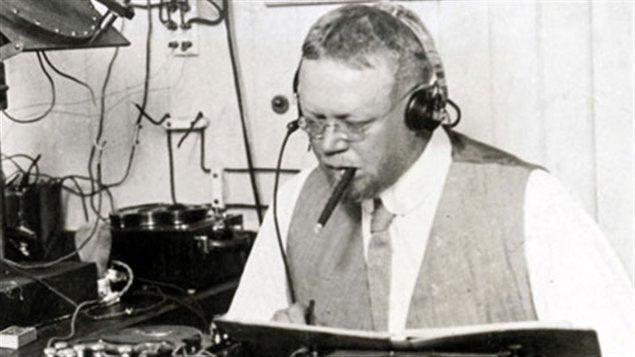
The First Song Ever Played on the Radio Was?
Share
Music broke through the radio silence in the early days of broadcasting before the era of viral hits and DJ decks and pre-radio-friendly music edits existed.
The initial song broadcast on radio has never been identified.
On a cold Christmas Eve of 1906 a violinist performed music in a silent room while sailors remained puzzled.
The Night Radio Found Its Voice: December 24, 1906
Canadian inventor Reginald Fessenden operated a makeshift radio shack in Brant Rock Massachusetts to conduct his groundbreaking wireless transmission of music and human voices to the air.

(The liquid "barretter", an electrolytic diode invented in 1902 by Canadian electrical engineer Reginald Fessenden, used as a radio wave detector in early radio receivers during the wireless telegraphy era. It was used in the first AM transmission)
The first AM radio broadcast occurred through a high-frequency alternator transmitter which Fessenden operated during that time period. Fessenden's innovation marked a turning point because he transmitted actual audio content through the airwaves.
And for his opening track?
The opening track by Fessenden included a violin rendition of “O Holy Night.”
Followed by a recitation from the Gospel of Luke.
A recording of Handel’s “Largo” played on a phonograph completed the broadcast.
The broadcast consisted of short experimental content which remained fragile throughout its duration. The experiment succeeded.
The Accidental Audience: Ships at Sea
The listeners that night weren’t in cosy living rooms, they were radio operators aboard ships scattered across the Atlantic Ocean, some as far away as the Virginia coast.
These were merchant and Navy vessels, cruising through the cold winter night, their operators dutifully manning Marconi wireless sets that were typically used for Morse code communication.
Suddenly, instead of the usual dots and dashes, they heard... music?
Imagine being one of those radio operators, huddled in a dimly lit cabin, bundled in wool, bracing against the creaking of the waves, and then hearing a violin playing “O Holy Night” drift through your headset.
Many were reportedly stunned. Some thought it was a trick or interference. A few even believed they were hallucinating from exhaustion.
After all, the very idea that music something so human, so emotional could be transmitted invisibly through the airwaves was still considered science fiction.
From Wonder to Routine
Radio failed to enter the public domain after Fessenden's broadcast but gained widespread popularity during the following ten years.
But that night in 1906 planted the seed. The broadcast showed that wireless audio transmission existed as a powerful technology.
Not Everyone Agrees…
Historians of radio technology present different versions of events regarding radio history. The Metropolitan Opera House in New York performed an opera in 1910 to become the first intentional music broadcast according to some accounts.
Historians agree that Fessenden broadcast music wirelessly to listeners for the first time in 1906 even though the audience remained unaware of the broadcast.
Radio changed music consumption by enabling sound transmission through the air without physical wires so music could reach all types of devices from homes to cars to headphones.
From 1906 to Now: A2D2 Stream and the Wireless Legacy
The technological advancements of Reginald Fessenden remained beyond his imagination since he could not foresee the creation of Bluetooth speakers and Sonos setups or AirPlay.
His determination to free sound from restrictions continues through technological advancements like A2D2 Stream.

A2D2 Stream lets you wirelessly transfer music from your vinyl or cassette or CD player to any Bluetooth or Wi-Fi speaker across your home. Your vintage audio equipment can now move freely between different rooms within your house.
Vinyl in the lounge.
Jazz in the kitchen.
Tapes in the bedroom.All connected. All seamless. All in real time.
No conversion or upload process or ripping exists in the experience. Pure playback offers the original audio experience while giving users contemporary convenience features.
Keep the Curiosity Going…
Do you appreciate the historical development of sound? The revival of analogue formats continues to fascinate listeners during the current AI and streaming era.
Explore some of our related blogs here.
Spinning History: Rare Audio Recordings on Display in Museums
Spinning History: Rare 78 RPM Records on Display in Museums
Moriz Jung: The Artist Who Captured the Magic of Early Phonographs
Vinyl Visions: How Peter Doig’s 'House of Music' Turns Art into Sound
The Phonograph: A Journey Through Sound and Time
The Intersection of Music and Gaming: From Soundtracks to Musical Playing Cards
10 Fun Facts About Vinyl Records That Every Collector Should Know
